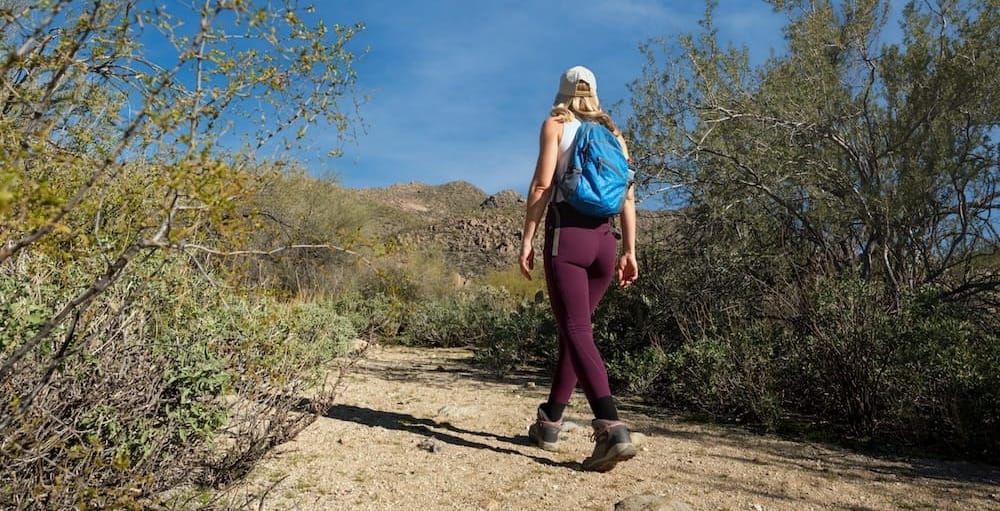How to Hike Solo: Safety Tips for Adventurous Hikers
Solo hiking is an empowering way to connect with nature on your own terms. By being prepared, staying aware, and hiking responsibly, you can enjoy every step of the journey.

How to Hike Solo: Safety Tips for Adventurous Hikers
Solo hiking can be one of the most freeing and fulfilling ways to explore the Southwest. Whether it’s the sense of independence, the quiet time with nature, or the thrill of discovering new trails on your own, hiking solo can be life-changing. But going it alone also means you’re fully responsible for yourself and your safety. Let’s dive into some essential tips for staying safe, being responsible, and making the most out of your solo adventures.
1. Plan and Share Your Route
The golden rule of solo hiking: always let someone know where you’re going and when you plan to be back. This is especially crucial for safety because:
- Trail Plans Keep You Accountable: Share the trail name, start time, expected finish time, and any other details with a friend or family member.
- Use Tracking Apps: Consider using a location-sharing app, like AllTrails or Gaia GPS, to help loved ones follow your progress in real-time.

Solo hiking is all about freedom, but staying accountable with a plan means someone knows to raise the alarm if needed.
2. Pack the Essentials (And Then Some)
When you’re on your own, it’s important to be prepared for every possibility. Here’s a quick essentials checklist:
- Navigation Tools: Maps, compass, GPS apps – bring what works best for you and know how to use them. Most of us these days rely on tracking apps like AllTrails for this, so be sure to download your trail ahead of time!
- SOS Device: It's pretty much imperative to carry a Garmin inReach, Spot or ZOLEO. These satellite communication devices allow you to send out texts in an emergency and if the worst happens, they have SOS features that contact emergency services that will come to rescue you.

- First-Aid Kit: Even a small scrape can be problematic without backup, so pack a well-rounded kit.
- Extra Water and Snacks: Hydration and energy are crucial, especially in the Southwest. Keep a bit extra in case your hike takes longer than planned. We recommend carrying a small water filter even if you don't plan to use it.
- Emergency Gear: Include items like a headlamp, emergency blanket, multi-tool, and whistle.
Think of your backpack as a miniature lifeline. It’s worth carrying a few extra ounces for peace of mind!
3. Be Aware of Your Surroundings
Solo hikers need to heighten their senses a little – and that can be part of the fun. Here are some ways to stay aware:
- Look for Landmarks: Pay attention to natural and man-made markers that help you orient yourself.
- Listen Closely: Avoid wearing earbuds so you can hear any wildlife, weather changes, or other hikers.

- Watch the Weather: Check the forecast before you go, and keep an eye on the sky while hiking. In the Southwest, storms can roll in fast.
4. Trust Your Instincts
Solo hiking can sometimes mean feeling a bit more vulnerable, and that’s okay. If something doesn’t feel right:
- Turn Around or Change Course: Always trust your gut. Whether it’s an intimidating section of trail or bad weather on the horizon, it’s better to be safe.
- Don’t Push Your Limits: Go at your own pace, take breaks, and enjoy the journey without feeling pressured to go faster or farther than you’re comfortable with.
5. Practice Leave No Trace
With no one else around to witness your good habits, it’s still important to be a responsible solo hiker:
- Pack It Out: Take all your trash (and even extra litter you find) with you.

- Stay on the Trail: Protect delicate ecosystems by staying on marked paths.
- Respect Wildlife: Remember, you’re in their home. Observe animals quietly and from a distance.
6. Prepare for Alone Time
One of the biggest joys of solo hiking is the quiet time, but it can take some getting used to. Here are a few ideas to help you enjoy your own company:
- Embrace the Silence: Use the time for meditation, reflection, or just to tune into the sounds of nature.
- Bring a Journal or Camera: If you’re a fan of documenting your thoughts or capturing landscapes, solo hikes are perfect for creative inspiration.
- Set Small Goals: Try identifying new plants, birdwatching, or finding unique landmarks. These mini goals make the hike feel even more rewarding.
7. Know Your Limits and Stick to Your Comfort Zone
Solo hiking is about freedom and independence, but it’s wise to stay within your skill level:
- Start with Well-Marked Trails: Especially if you’re new to hiking alone, pick established trails with good signage.
- Gauge Your Energy: Hiking solo can be tiring, so take breaks often and turn around if you feel fatigued. There’s no need to conquer every peak in one day!
8. Celebrate the Small Wins
Solo hiking means every accomplishment is yours to celebrate:
- Take Time to Enjoy the View: Pause and take it all in. These moments belong only to you.
- Be Proud of Your Independence: Whether it’s a two-mile loop or a full-day hike, you’ve done something amazing on your own.
Wrapping Up
Solo hiking is an empowering way to connect with nature on your own terms. By being prepared, staying aware, and hiking responsibly, you can enjoy every step of the journey. Now grab that backpack, hit the trail, and make some memories—because solo hiking is an adventure all your own!


